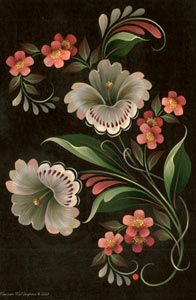A Brief History of the Petunia
June 1, 2017

POSTED at Ebenshades Garden Centers:
“The petunias we know today are a far cry from those that first appeared in 19th century gardens, although they’re all based mainly on two species that were discovered in South America in the mid-1700’s and early 1800’s: White-flowered Petunia axillaris and purple-flowered Petunia violacea. Introduced into Europe in the early 1800’s, these species weren’t spectacular garden flowers–they were lanky and rather small-flowered–but breeders even then, especially in Germany and England, began crossing them in search of larger flowers and more colors. The result was the garden petunia–a group of plants in exciting colors, some with large, sometimes double flowers, others with fringed single flowers. Referred to as Petunia x hybrida, the plants weren’t hybrids as we know the term; they were chance crossings of species. Burpee’s 1888 catalog listed a ‘Black-throated Superbissima‘, which had deeply veined, dark crimson-purple petals and a black throat.
Double flowers, as Vaughan’s Seed Catalog of 1900 noted, occurred in only 20 to 30 percent of the plants grown from seed; the rest would be large singles. It took until the 20th century for hybridizers to bring the genetics of Mendel to bear on petunia plant breeding.
“At the beginning of this century, breeders in Japan began researching petunias, and in 1934, Sakata Seed Corporation bred the first consistently fully-double petunias. ‘All Double Victorious’ mix, considered a breeding breakthrough, was an All-America Selections Winner that year. Flowers were as large flowered as double petunias of today. It was a grandiflora type with fringed petals. Sakata Seed Corporation managed to interpret and apply Mendel’s law of gene dominance in the search for a fully-double petunia, one that would come true to type from seed.
“During the 1930’s, German seed companies bred grandiflora petunias–all open-pollinated varieties–and greatly expanded the diversity of the plants, especially in the area of colors. The 1939 Benary Seed Growers catalog offered an open-pollinated, dark purple, white-edged petunia–only recently, in the ’90’s, has this unusual bicolor combination been introduced as a hybrid. The history of the hybrid petunia involved an exchange of information–individuals and companies learning from, and building on, what others had done.
“In the late ’30’s, Charles Weddle, of W. Atlee Burpee & Company, applied the same law in his search for the fully double petunia. When he discovered the key–that the gene for doubleness was a dominant gene and crossing a true breeding double-flowered petunia with a compatible petunia would yield seeds that produced all double-flowered offspring–the production of modern-day petunias was on the way. After the interruption of World War II, work began again in earnest. Doubleness wasn’t the only characteristic breeders were looking for. They also wanted larger flowers, and more of them for a longer time, more compact plants with better branching habits, better disease- and weather-resistance–many petunias, even today, look bedraggled after a rainstorm. Fred Statt, of Harris Seeds, worked on disease-resistance, while still coming up with petunias that looked beautiful. In the early ’50s, Weddle and Claude Hope, founders of Pan American Seed Company, went on to hybridize double and single grandifloras and multifloras–these really revolutionized the bedding plant industry.” [Read more here.]
